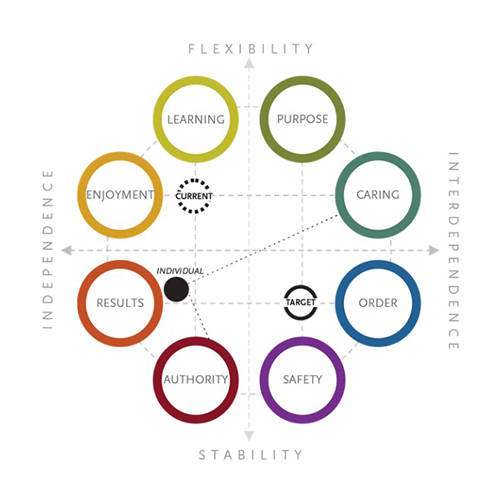October 11, 2018
What Can GCs Do About Culture? More Than You Might Think.
Much has been said about the importance of diversity and inclusion, but how do you actually make it happen? That was a key question at this year’s Minority Corporate Counsel Association (MCCA) Pathways to Diversity Conference. For many organizations, changing the organizational culture is a large part of the answer. Dr. Catherine McGregor, editor-in-chief of the MCCA’s Diversity & the Bar magazine, moderated a panel discussion to delve into in-house perspectives on the topic, which included my colleague and expert in organizational culture and talent, Jesse Price; Sheila Denton, senior vice president and general counsel at Boehringer Ingelheim USA; Elizabeth Feeney, assistant general counsel at GlaxoSmithKline; and Pedro Pavon, senior managing counsel at Oracle Corporation.
The conversation yielded practical advice and deeper insights into the role of the general counsel (GC) in shaping organizational culture and moving the needle on diversity and inclusion.
1. GCs have a central seat at the table now — use it.
The upside to increased volatility and risk in today’s environment is that CEOs and boards are increasingly turning to GCs for guidance on how to manage this risk. Use your heightened platform to help drive the conversation about the organization’s culture including diversity and inclusion. Measure results by percentage of diverse new hires, partners and senior leaders. If progress isn’t made, one panelist remarked, “Hold their feet to the fire,” and ask the CEO, CHRO and board why candidate slates are not more diverse.
Think of yourself as a culture creator. Hire diverse talent in the legal department, have diverse representation on committees and in senior roles, and model what a diverse team looks like. Other functional leaders we partner with, including CEOs and heads of HR, have told us that this “being the change” approach can spark organization-wide change.
2. It’s about big-picture discussions …
The panelists engaged in thoughtful and transparent discussion about whether it’s more important to first create a shared framework and language around culture at the top or to take immediate action. One argument is that in order to talk about how to improve diversity and inclusion, there needs to be a safe space for these conversations to happen in the first place. And organizational culture plays a key role in creating that space.

Leaders need to understand where the organization’s culture — which we define as the shared assumptions that drive the way organizations think, act and behave — is today and where it wants to be. For example, using our culture model, in a company that is more results-oriented, setting clearly defined targets will likely be more effective than attempting a gradual evolution. Gaining agreement about the culture and the desired degree of culture change is important and effective. Research shows that a culture that’s aligned with the strategy drives positive business outcomes, as does a more diverse organization.
3. … and everyday actions.
Importantly, change on a smaller scale (or a bottom-up approach) can also inspire change more broadly. The panelists shared what they’ve been doing to help effect change in their organizations:
- Storytelling — Sharing profiles of diverse legal team members helped empower individuals, made the unfamiliar familiar and demonstrated that people may have more things in common with someone of a different background than expected
- Podcast group — Adapting the book club concept for podcasts helped create a safe space to talk about hot-button social issues from race to gun control
- Reverse mentoring — Instituting a program in which the senior legal leadership team is mentored by more junior individuals of different races, genders, ages and sexual orientations helped spark conversations and build understanding
- Town halls and listening tours — Creating open forums across the organization to share and hear other perspectives, as diversity means different things in different countries
- Inclusion talks — Collaborating with HR to offer workshops on how to have difficult conversations about diversity
- Outside advisers — Engaging with external advisers helped teams “get out of their heads” and see themselves as an outsider would
4. Be careful when assessing for “culture fit.”
Some panelists observed that the concept of culture fit can often be synonymous with “same” and can create a club-like atmosphere. Research has shown that we are predisposed to trust people who are like us — people who, for instance, attended the same college, played the same sport or had a similar career path.
To help combat unconscious bias in the hiring and candidate assessment process, GCs can advocate for a thoughtful and data-driven understanding of the culture and what it means to the performance of the business, as well as utilize tools to evaluate how candidates for leadership roles fit with the culture the company has or is building.
We use a framework that evaluates organizational culture and individuals’ personal style on two dimensions — how they respond to change and how they work with others. This framework can be used to evaluate organizational culture and understand how an individual executive is likely to align with — and shape — that culture.
Conclusion
Everyone agreed on one crucial point: Organizational culture and diversity are not just trends. Organizations and senior leaders that don’t evolve on these fronts will be left behind in a rapidly changing world where diverse perspectives are critical. While creating a positive organizational culture and increasing diversity and inclusion require commitment from the top for long-term change, GCs today are uniquely positioned to help advance these vital priorities.
Jennifer Gerney is an attorney and a member of Spencer Stuart's Legal, Compliance & Regulatory Practice. She has a strong concentration in the promotion of diversity in the legal profession and is a frequent speaker on how to advance diverse talent. Reach her via email and follow her on LinkedIn.